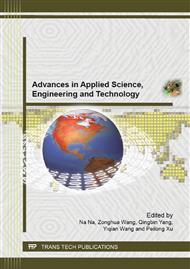p.801
p.805
p.810
p.814
p.819
p.823
p.827
p.832
p.836
Time Series Analysis of Pulmonary Tuberculosis Incidence: Forecasting by Applying the Time Series Model
Abstract:
The main objective of this study is to identify the stochastic autoregressive integrated moving average (ARIMA) model to predict the pulmonary tuberculosis incidence in Qianan. Considering the Box-Jenkins modeling approach, the incidence of pulmonary tuberculosis was collected monthly from 2004 to 2010. The model ARIMA(0,1,1)12 was established finally and the residual sequence was a white noise sequence. Then, this model was used for calculating dengue incidence for the last 6 observations compared with observed data, and performed to predict the monthly incidence in 2011. It is necessary and practical to apply the approach of ARIMA model in fitting time series to predict pulmonary tuberculosis within a short lead time.
Info:
Periodical:
Pages:
819-822
Citation:
Online since:
June 2013
Authors:
Keywords:
Price:
Сopyright:
© 2013 Trans Tech Publications Ltd. All Rights Reserved
Share:
Citation:


